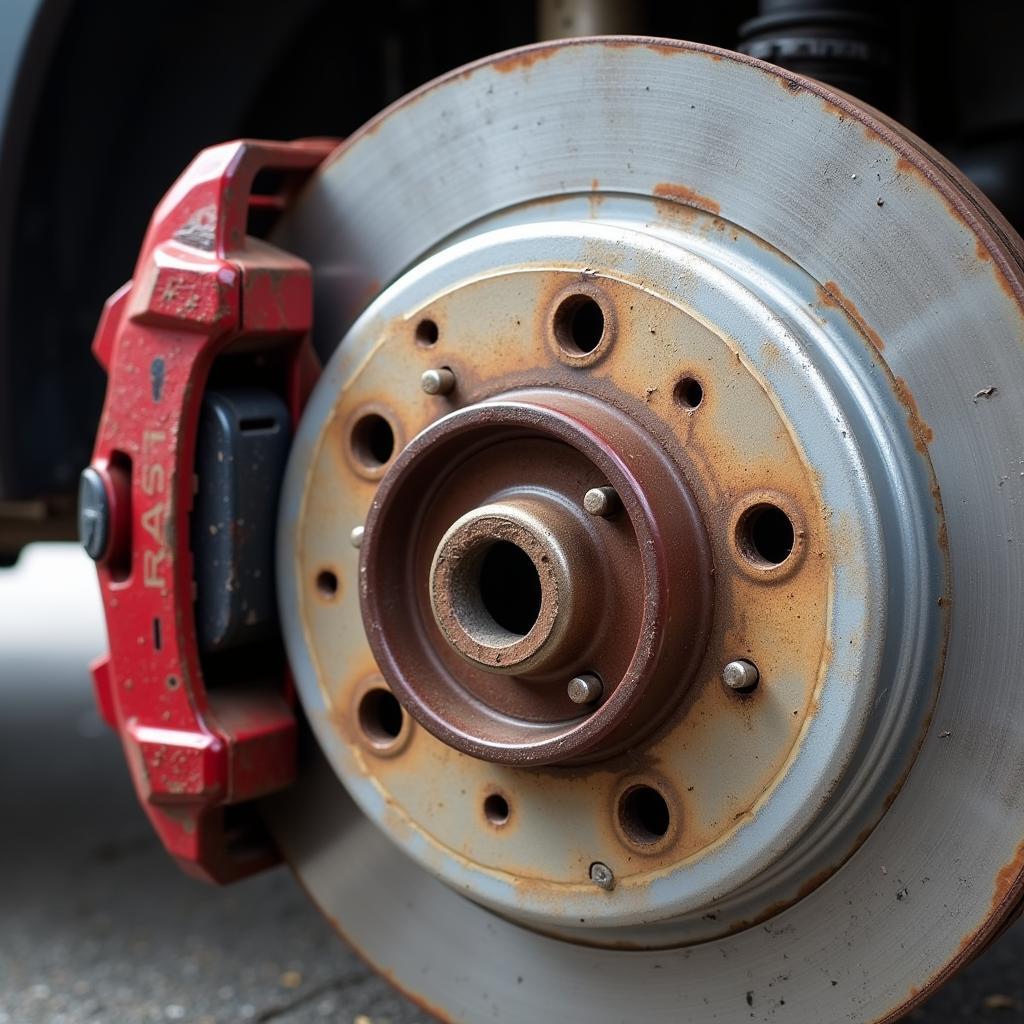A brake warning light on your dashboard can be a jarring experience, especially in a Mercedes C230. Is it a front or back issue? Is it serious? Before you panic, this guide will walk you through understanding what that “C230 brake warning” light might mean and how to troubleshoot potential problems.
Understanding Your C230 Brake System
Your C230’s braking system is comprised of several key components working together to ensure safe stopping power:
- Hydraulic System: This uses brake fluid to transmit force from your foot on the pedal to the calipers at each wheel.
- Brake Pads and Rotors: These create friction to slow and stop the wheels.
- Brake Lines and Hoses: These carry the brake fluid throughout the system.
- Sensors: Your C230 has sensors that monitor brake fluid level, pad wear, and the overall health of the system.
Common Causes of a C230 Brake Warning Light
While a mechanic should diagnose the exact issue, here are some frequent culprits:
1. Worn Brake Pads: This is the most common reason for the warning light. C230s have wear sensors that trigger the light when the pads get too thin.
2. Low Brake Fluid: A leak in the brake lines, hoses, or a malfunctioning master cylinder can lead to low fluid, compromising braking performance.
3. Brake Fluid Flush Needed: Over time, brake fluid absorbs moisture, reducing its effectiveness. Mercedes recommends regular flushes to maintain optimal performance.
4. ABS Sensor Issue: The Anti-lock Braking System (ABS) has sensors at each wheel. A malfunctioning sensor can trigger the warning light.
5. Brake Pad Wear Sensor Malfunction: While less common, the sensor itself can fail, illuminating the warning light even with sufficient pad life remaining.
Determining if the Issue is Front or Back
Unfortunately, the standard brake warning light doesn’t specifically indicate a front or rear problem. However, here’s where your senses and some observation can provide clues:
- Noises: A grinding noise when braking often signals worn brake pads, usually more noticeable on one axle.
- Pulling: Does the car pull to one side when braking? This could indicate a problem with the brakes on that side.
- Brake Pedal Feel: A spongy or soft brake pedal can point towards air in the brake lines or a problem with the master cylinder.
What to Do When the Light Comes On
- Safely Pull Over: Don’t panic! If possible, safely move to the side of the road.
- Check Your Brake Fluid: With the engine off, carefully open the brake fluid reservoir. If it’s low, there’s likely a leak. Do not drive further.
- Inspect Your Wheels: Look for any visible signs of brake fluid leaks around the wheels or inside the rims.
- Call for Assistance: If you notice anything unusual or suspect a serious issue, do not attempt to drive. Call a qualified mechanic or towing service.
Remote Diagnosis and Software Solutions
In some cases, remote diagnosis and software solutions can help identify the brake warning issue in your C230. By connecting your car to a specialized diagnostic tool, a remote technician can:
- Read Fault Codes: These codes provide specific insights into the problem, helping to pinpoint the affected component.
- Analyze Sensor Data: Live data from wheel speed sensors, brake pressure sensors, and other relevant components can reveal inconsistencies and malfunctions.
- Perform Software Updates: In some instances, brake system issues might be resolved through software updates for your C230’s control modules.
“Remote diagnostics can be particularly helpful in identifying issues with the ABS system or other electronically controlled braking components,” says Tim Davis, a certified Mercedes technician. “However, it’s crucial to remember that any physical repairs or replacements will still require an in-person mechanic.”
Preventing Future Brake Issues
- Adhere to the Maintenance Schedule: Follow your C230’s recommended maintenance intervals for brake fluid flushes and pad inspections.
- Listen for Unusual Noises: Address any grinding, squeaking, or scraping sounds immediately.
- Be Aware of Brake Pedal Changes: A change in pedal feel, such as sponginess or increased travel, warrants immediate attention.
Conclusion
A brake warning light in your C230 shouldn’t be ignored. By understanding the potential causes, recognizing warning signs, and seeking professional assistance when necessary, you can ensure the safety and longevity of your Mercedes braking system. Regular maintenance and a proactive approach to unusual symptoms will go a long way in preventing unexpected and potentially dangerous brake failures.

